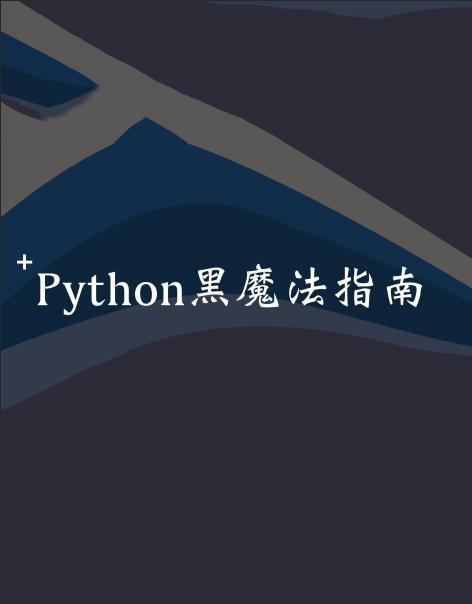
这15个短代码,蕴含着丰富的python编程思维
PDF
发布日期:2021-06-29 17:34:33
浏览次数:2
分类:技术文章
本文共 2838 字,大约阅读时间需要 9 分钟。
1.检查重复元素
下面的方法可以检查给定列表中是否有重复的元素。它使用了 set() 属性,该属性将会从列表中删除重复的元素。
def all_unique(lst): return len(lst) == len(set(lst)) x = [1,1,2,2,3,2,3,4,5,6] y = [1,2,3,4,5] all_unique(x) # False all_unique(y) # True
2.变位词
检测两个字符串是否互为变位词(即互相颠倒字符顺序)
from collections import Counter def anagram(first, second): return Counter(first) == Counter(second) anagram("abcd3", "3acdb") # True 3.检查内存使用情况
以下代码段可用来检查对象的内存使用情况。
import sys variable = 30 print(sys.getsizeof(variable)) # 24
4.字节大小计算
以下方法将以字节为单位返回字符串长度。
def byte_size(string): return(len(string.encode( utf-8 ))) byte_size( ???? ) # 4 byte_size( Hello World ) # 11
5.重复打印字符串 N 次
以下代码不需要使用循环即可打印某个字符串 n 次
n = 2s ="Programming"print(s * n); # ProgrammingProgramming
6.首字母大写
以下代码段使用 title() 方法将字符串内的每个词进行首字母大写。
s = "programming is awesome" print(s.title()) # Programming Is Awesome
7.分块
以下方法使用 range() 将列表分块为指定大小的较小列表。
from math import ceil def chunk(lst, size): return list(map(lambda x: lst[x * size:x * size + size],list(range(0, ceil(len(lst) / size))))) chunk([1,2,3,4,5],2) # [[1,2],[3,4],5]
8.压缩
以下方法使用 fliter() 删除列表中的错误值(如:False, None, 0 和“”)
def compact(lst): return list(filter(bool, lst)) compact([0, 1, False, 2, , 3, a , s , 34]) # [ 1, 2, 3, a , s , 34 ]
9.间隔数
以下代码段可以用来转换一个二维数组。
array = [[ a , b ], [ c , d ], [ e , f ]] transposed = zip(*array) print(transposed) # [( a , c , e ), ( b , d , f )]
10.链式比较
以下代码可以在一行中用各种操作符进行多次比较。
a = 3 print( 2 < a < 8) # True print(1 == a < 2) # False
11.逗号分隔
以下代码段可将字符串列表转换为单个字符串,列表中的每个元素用逗号分隔。
hobbies = ["basketball", "football", "swimming"]print("My hobbies are: " + ", ".join(hobbies)) # My hobbies are: basketball, football, swimming 12.计算元音字母数
以下方法可计算字符串中元音字母(‘a’, ‘e’, ‘i’, ‘o’, ‘u’)的数目。
import re def count_vowels(str): return len(len(re.findall(r [aeiou] , str, re.IGNORECASE))) count_vowels( foobar ) # 3 count_vowels( gym ) # 0
13.首字母恢复小写
以下方法可用于将给定字符串的第一个字母转换为小写。
def decapitalize(string): return str[:1].lower() + str[1:] decapitalize( FooBar ) # fooBar decapitalize( FooBar ) # fooBar
14.平面化
以下方法使用递归来展开潜在的深度列表。
def spread(arg): ret = [] for i in arg: if isinstance(i, list): ret.extend(i) else: ret.append(i) return retdef deep_flatten(lst): result = [] result.extend(spread(list(map(lambda x: deep_flatten(x) if type(x) == list else x, lst)))) return resultdeep_flatten([1, [2], [[3], 4], 5]) # [1,2,3,4,5]
15.差异
该方法只保留第一个迭代器中的值,从而发现两个迭代器之间的差异。
def difference(a, b): set_a = set(a) set_b = set(b) comparison = set_a.difference(set_b) return list(comparison)difference([1,2,3], [1,2,4]) # [3]
推荐阅读
送书
|
| 关注「开学」 回复531275下载  |
喜欢就奖励一个“赞”和“在看”呗~
转载地址:https://cpython.blog.csdn.net/article/details/115543088 如侵犯您的版权,请留言回复原文章的地址,我们会给您删除此文章,给您带来不便请您谅解!
发表评论
最新留言
不错!
[***.144.177.141]2024年04月15日 19时37分18秒
关于作者

喝酒易醉,品茶养心,人生如梦,品茶悟道,何以解忧?唯有杜康!
-- 愿君每日到此一游!
推荐文章
20年后,这5种编码语言可能就消失了……
2019-04-29
标准出现问题,人工智能正在走向错误的方向
2019-04-29
如何使用Python实现最低有效位隐写术?
2019-04-29
湮没在赞誉之中,科学史上鲜为人知的五大“败笔”
2019-04-29
别再对分类变量进行独热编码!你还有更好的选择
2019-04-29
如果不能用Python执行机器学习,那该用什么呢?
2019-04-29
不论何时,互联网从业者一直幸福着~
2019-04-29
mysql用户口令中含有特殊字符@的情况下,如何正确链接数据库
2019-04-29
SpringFox接口文档API DOC
2019-04-29
netty优化策略
2019-04-29
架构师知识体系全景图
2019-04-29
guava中EventBus(事件总线)源码分析与使用
2019-04-29
程序员成神之路文章目录
2019-04-29
SASS软件的成熟度模型总结
2019-04-29
一次搞定redis使用
2019-04-29
最全架构设计实践方法论: 微服务
2019-04-29
Linux下简单几步安装AI开发环境-ROS(超有意思)
2019-04-29
linux入门--磁盘管理之分区、格式化与挂载
2019-04-29
开发必备:HTTP 及 TLS
2019-04-29
如何设计自己的第一个加密交易机器人?
2019-04-29
